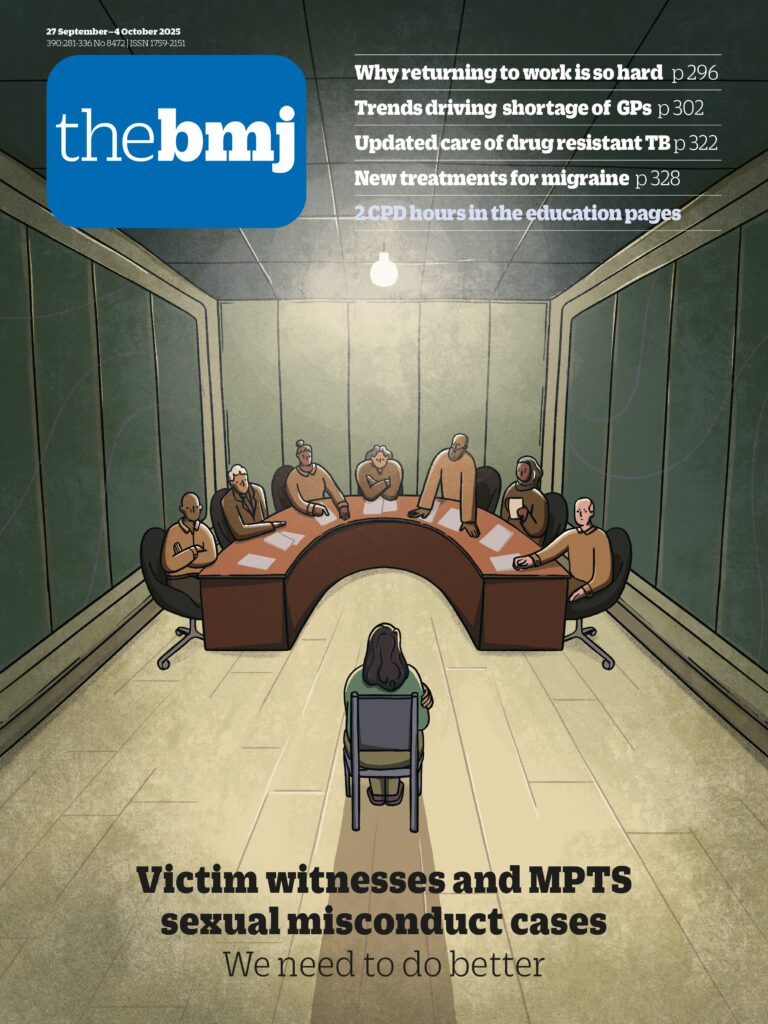Sustained research effort and investment is required to reduce inequities in menopause care
In the UK, women living in areas of socioeconomic disadvantage have shorter life expectancies and spend more years living with disability.1 Health inequalities vary geographically2 and women from ethnic minorities are more likely than white women to report poor health and negative experiences with healthcare.3 Women spend a greater proportion of their lives in ill health and disability than men,45 and conditions that are more common in women also receive less research funding than those affecting men.67 Menopause is one such overlooked area of women’s health, with stark inequities in access to menopause information and care that need urgent attention.
The Women’s Health Strategy for England highlights that women want more information about the menopause and treatment options.8 Improving access to care and support during menopause is part of the government’s plan to make women’s health services more equitable and improve access to care, including establishing Women’s Health Hubs9 that should be tailored to local needs. A key paper from 2020 reported 29% lower prescription rate of hormone replacement therapy in general practices in the most deprived regions of England compared with the most affluent.10 This research inspired our team to investigate differences in hormone replacement therapy prescription in greater depth and to determine at an individual level (rather than practice level) which women are getting hormone replacement therapy.
Our research, published in BMJ Medicine (doi:10.1136/bmjmed-2025-001349), provides this detail by examining how hormone replacement therapy prescription differs by socioeconomic status and ethnic group using data from individual health records.11 We found that hormone replacement therapy was prescribed to 22% of white women, 9% of Caribbean women, and 4% of black African women. In South Asian women prescription rates ranged from 9% in Indian women to 6% in Bangladeshi women. Prescription rates also varied by socioeconomic status, ranging from 24% in the most affluent areas to just 11% in the most deprived. To our knowledge, this is the first UK dataset to show that ethnic and socioeconomic inequalities in hormone replacement therapy prescription persist even after adjusting for other factors such as age.
These findings show that many women who might benefit from hormone replacement therapy are not receiving it. The reasons are likely to be multifactorial, from both the clinician and patient, and our research highlights a need for holistic, culturally sensitive, and timely care.1213
Since 2015, the UK’s National Institute for Health and Care Excellence (NICE) has issued menopause guidance,1415 most recently updated in 2024, and the James Lind Alliance has published menopause research priorities.16 Both state the need for further research around women from ethnic minority backgrounds and menopause, particularly when it comes to the benefits and risks of hormone replacement therapy. We urgently need to prioritise women’s health research.
Our research is an important step in improving knowledge about hormone replacement therapy and menopause care, revealing gaps in treatment that may have clinical consequences, such as lower prescription rates of transdermal hormone replacement therapy preparations in deprived areas where rates of cardiovascular disease are higher. With sustained research efforts and targeted investment in women’s health, particularly menopause care, there is hope that these inequities can be reduced over time.
Footnotes
-
Competing interests: JH reports no competing interests. SH received funding from Besins to travel to the World Menopause Congress, 2024.
-
AI use: None.
-
Provenance and peer review: Commissioned; not externally peer reviewed.

